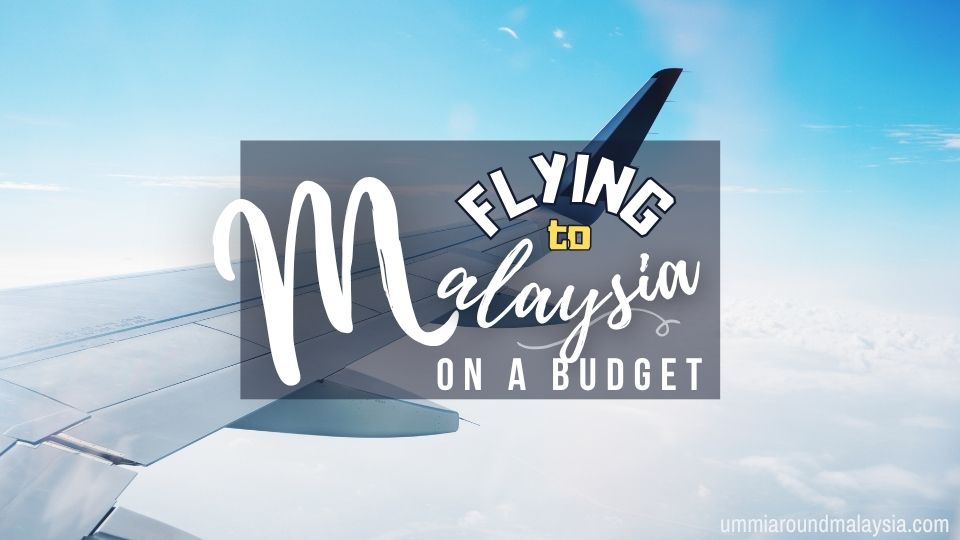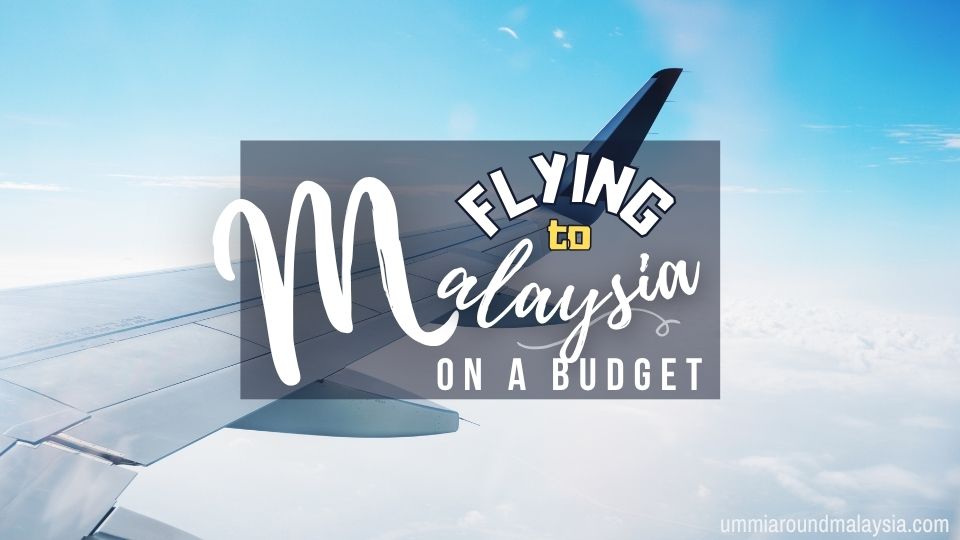
Malaysia, a vibrant tapestry of cultures, breathtaking landscapes, and culinary delights, beckons travellers from around the globe. From the towering skyscrapers of Kuala Lumpur to the ancient rainforests of Borneo, this Southeast Asian gem offers an experience for every type of adventurer. And the best part? Exploring Malaysia doesn’t have to break the bank, especially when it comes to airfare. With a bit of savvy planning, cheap flights to Malaysia are well within reach, paving the way for an affordable yet incredibly rich journey.
This comprehensive guide will not only help you navigate the world of budget air travel to Malaysia but also equip you with essential knowledge about its top attractions, fascinating history, practical travel tips, accommodation options, transportation, and the best time to visit, ensuring your Malaysian adventure is as seamless as it is spectacular.
The Art of Finding Cheap Flights to Malaysia

Related Articles about Unlocking Malaysia: Your Guide to Cheap Flights and an Unforgettable Adventure:
- The Jewel of Arabia: An Ultimate Travel Guide to the United Arab Emirates
- Chile: A Symphony of Extremes and Enduring Charms
- Toronto: Your Ultimate Guide to Canada’s Dynamic Metropolis
- Johannesburg: A City of Gold, Grit, and Growth – Your Comprehensive Travel Guide
- Unveiling Qatar: A Guide to Exploring the Pearl of the Gulf
Securing an affordable flight is the first, crucial step in planning your Malaysian escapade. Here’s how to become a pro at finding those elusive deals:
-
Be Flexible with Dates: This is arguably the most impactful strategy. Flight prices fluctuate dramatically based on demand. Avoiding peak seasons (school holidays, major festivals like Chinese New Year or Eid al-Fitr) can yield significant savings. Tools like Google Flights or Skyscanner allow you to view prices across an entire month, highlighting the cheapest days to fly. Even shifting your departure or return by a day or two can make a big difference.
-
Utilise Flight Comparison Websites: Websites like Skyscanner, Google Flights, Kayak, and Momondo are your best friends. They scour hundreds of airlines and online travel agencies to present you with the best options. Always check a few different sites, as their results can vary.
-

Consider Budget Airlines: Asia is a hub for excellent budget carriers. AirAsia, based in Malaysia, is a major player, offering extensive routes across the region and beyond. Other budget-friendly options include Scoot (Singapore Airlines’ low-cost arm) and Batik Air (formerly Malindo Air). While these airlines offer lower base fares, be mindful of additional costs for baggage, seat selection, and in-flight meals, which can add up if not accounted for.
-
Book in Advance (But Not Too Far): Generally, booking 2-4 months before your departure offers the sweet spot for international flights. Booking too early (e.g., 6-12 months out) might mean paying higher initial prices, while last-minute bookings often come with a premium.
-
Set Price Alerts: Most flight comparison websites allow you to set up email alerts for specific routes. You’ll be notified automatically when prices drop, ensuring you don’t miss a good deal.
-
Fly Mid-Week and During Off-Peak Hours: Tuesdays, Wednesdays, and Thursdays are typically cheaper days to fly than weekends. Similarly, red-eye flights or very early morning departures often come with lower price tags.
-
Consider Layovers: Direct flights are convenient but often more expensive. Be open to flights with one or two layovers, as they can significantly reduce the cost. Just ensure the layover times are manageable and that you have enough time to connect.
-
Use Incognito Mode/Clear Cookies: Airlines and booking sites sometimes track your searches. Repeated searches for the same route might lead to inflated prices as the system anticipates your demand. Browsing in incognito mode or clearing your browser’s cookies can help prevent this.
-
Look for Package Deals: Sometimes, bundling your flight with accommodation or car rental can offer overall savings, though this requires careful comparison with booking each element separately.
Malaysia’s Top Attractions: A Kaleidoscope of Experiences
Once your cheap flight is secured, it’s time to dream about the wonders that await. Malaysia boasts an incredible array of attractions:
-
Kuala Lumpur (KL): The bustling capital is a city of contrasts. Marvel at the iconic Petronas Twin Towers, visit the majestic Batu Caves with its colourful steps and Hindu shrines, explore the vibrant markets of Chinatown and Little India, and indulge in world-class shopping. Don’t miss the panoramic views from the KL Tower or a stroll through the lush KLCC Park.
-
Penang: A UNESCO World Heritage site, Georgetown, Penang, is a cultural melting pot renowned for its colonial architecture, vibrant street art, and legendary hawker food. Explore historic temples, mosques, and churches, and embark on a culinary journey through its famous street food stalls.
-
**Langkawi: This archipelago of 99 islands on Malaysia’s west coast is a tropical paradise. Known for its pristine beaches, duty-free shopping, and lush rainforests, highlights include the Langkawi SkyCab (cable car) offering breathtaking views, the Kilim Geoforest Park with its mangroves and limestone formations, and island-hopping tours.
-
Borneo (East Malaysia): A haven for nature lovers and adventurers. In Sabah, conquer Mount Kinabalu, Southeast Asia’s highest peak, or encounter orangutans at the Sepilok Orangutan Rehabilitation Centre. In Sarawak, explore the Mulu Caves National Park, a UNESCO site famous for its massive cave systems, or visit indigenous longhouses. Borneo also offers world-class diving spots like Sipadan Island.
-
Cameron Highlands: Escape the heat in this cool, refreshing hill station. Famous for its sprawling tea plantations (like BOH Tea Plantation), strawberry farms, and mossy forests, it’s a perfect retreat for nature walks and scenic drives.
-
Melaka (Malacca): Another UNESCO World Heritage site, Melaka is steeped in history. Its charming streets showcase influences from Portuguese, Dutch, and British colonial rule. Explore St. Paul’s Hill, the Stadthuys (Dutch Square), and the vibrant Jonker Street night market.
A Glimpse into Malaysia’s Rich History
Malaysia’s history is as diverse and captivating as its present-day culture. Its strategic location along ancient maritime trade routes made it a coveted land, leading to centuries of cultural exchange and external influence.
- Early Kingdoms: The Malay Peninsula was home to several powerful early kingdoms, such as Langkasuka and Srivijaya, which thrived on trade and adopted Hindu-Buddhist influences from India.
- The Rise of Islam and Malay Sultanates: From the 14th century onwards, Islam arrived and rapidly spread, leading to the establishment of powerful Malay Sultanates, most notably the Sultanate of Malacca (Melaka). Malacca became a crucial trading port, attracting merchants from across Asia, the Middle East, and Europe.
- Colonial Era: The Portuguese were the first European power to capture Malacca in 1511, followed by the Dutch in 1641, and finally the British in 1824. The British gradually extended their influence over the entire peninsula, establishing the Straits Settlements (Penang, Malacca, and Singapore) and eventually forming the Federated Malay States. British rule saw the introduction of rubber and tin mining, attracting large numbers of Chinese and Indian immigrants, further enriching Malaysia’s multicultural fabric.
- World War II and Independence: The Japanese occupation during World War II severely weakened British authority and fueled nationalist sentiments. After a period of communist insurgency and the formation of the Malayan Union (which faced strong Malay opposition), the Federation of Malaya gained independence in 1957. In 1963, Malaya, Singapore, Sabah, and Sarawak united to form Malaysia. Singapore later separated in 1965.
- Modern Malaysia: Since independence, Malaysia has transformed into a rapidly developing nation, navigating the complexities of its diverse population while preserving its unique cultural heritage. Its history of trade and migration has resulted in a society where Malay, Chinese, Indian, and indigenous cultures coexist, creating a vibrant and harmonious blend.
Practical Travel Tips for Malaysia
To ensure a smooth and enjoyable trip, keep these practical tips in mind:
- Visa Requirements: Many nationalities can enter Malaysia visa-free for stays ranging from 14 to 90 days. Always check the latest visa regulations for your specific nationality before travelling.
- Currency: The local currency is the Malaysian Ringgit (MYR). ATMs are widely available, and credit cards are accepted in most urban areas.
- Language: Bahasa Malaysia (Malay) is the official language, but English is widely spoken, especially in tourist areas and major cities. Mandarin, various Chinese dialects, and Tamil are also commonly spoken.
- Safety: Malaysia is generally a safe country for tourists. However, like anywhere, exercise common sense: be aware of your surroundings, especially in crowded areas, and take precautions against petty theft.
- Health: Ensure your routine vaccinations are up to date. Dengue fever is present, so use mosquito repellent, especially at dawn and dusk. Tap water is generally not safe to drink directly; stick to bottled water. Travel insurance is highly recommended.
- Cultural Etiquette: Malaysians are generally polite and hospitable. When visiting religious sites, dress modestly (shoulders and knees covered). Remove your shoes before entering homes or mosques. Use your right hand when giving or receiving items, especially food.
- Connectivity: Local SIM cards are affordable and widely available at airports and convenience stores. Providers like Maxis, Celcom, and Digi offer good coverage. Alternatively, consider an eSIM for convenience.
- Power Plugs: Malaysia uses Type G power sockets (three rectangular pins), similar to the UK. The standard voltage is 240V at 50Hz. Bring a universal adapter.
Accommodation Options: Sleeping Soundly on a Budget
Malaysia caters to all budgets, making it easy to find comfortable and affordable places to stay:
- Hostels: Found in major cities and popular tourist spots, hostels offer dormitory beds at very low prices, often including communal areas and sometimes breakfast. Many also offer private rooms for a slightly higher cost. They’re great for solo travellers looking to socialise.
- Budget Hotels & Guesthouses: These are plentiful across Malaysia, offering clean, basic rooms with essential amenities like air conditioning and private bathrooms. They provide excellent value for money and are ideal for couples or small groups.
- Homestays: For a more immersive cultural experience, consider a homestay, particularly in rural areas or smaller towns. You’ll live with a local family, offering insights into Malaysian life and cuisine.
- Mid-Range Hotels: Even mid-range hotels in Malaysia are often surprisingly affordable compared to Western standards. These offer more amenities like swimming pools, gyms, and on-site restaurants, without breaking the bank.
- Booking Platforms: Use popular sites like Booking.com, Agoda, and Hostelworld to compare prices and read reviews. Booking in advance, especially during peak season, is always advisable.
Navigating Malaysia: Transportation Made Easy
Getting around Malaysia is relatively easy and affordable, thanks to its well-developed infrastructure:
- Within Cities:
- Grab: The dominant ride-hailing app (similar to Uber) is incredibly convenient, affordable, and widely available in major cities.
- Public Transport (Kuala Lumpur): KL boasts an efficient network of LRT (Light Rail Transit), MRT (Mass Rapid Transit), and monorail lines, connecting key attractions and areas.
- Buses: Local buses are a very cheap way to get around, though they can be slower and less frequent than other options.
- Walking: Many city centres, especially in Georgetown (Penang) and Melaka, are best explored on foot.
- Inter-City Travel:
- Buses: An extensive network of comfortable, air-conditioned long-distance buses connects almost every town and city in Peninsular Malaysia. They are very affordable and a popular choice.
- Trains: KTM (Keretapi Tanah Melayu) operates train services. The ETS (Electric Train Service) is fast and comfortable, connecting major cities like KL, Ipoh, and Butterworth (for Penang). It’s a scenic way to travel.
- Domestic Flights: For longer distances, especially between Peninsular Malaysia and Borneo, domestic flights are the most efficient option. AirAsia, Firefly, and Batik Air offer frequent and often cheap flights.
- Ferries: Ferries connect the mainland to popular islands like Langkawi and Penang.
Best Time to Visit Malaysia
Malaysia enjoys a tropical climate year-round, but it’s essential to understand its monsoon seasons, as they differ between the east and west coasts of Peninsular Malaysia, and Borneo.
- West Coast (e.g., Kuala Lumpur, Penang, Langkawi): The dry season generally runs from November to February, making it an ideal time to visit these popular destinations with plenty of sunshine and pleasant temperatures. The "shoulder seasons" of March-April and September-October can also be good, with fewer crowds and potentially lower prices, though you might encounter occasional rain showers.
- East Coast (e.g., Perhentian Islands, Tioman Island, Redang Island): The monsoon season here is more pronounced, typically from November to March, bringing heavy rainfall and rough seas, leading to many resorts and ferry services closing down. The best time to visit the east coast islands is from April to September, with June to August being peak season offering the driest and sunniest weather.
- Borneo (Sabah & Sarawak): Borneo generally experiences rain throughout the year, but there are distinct drier periods. For climbing Mount Kinabalu, April to September is generally preferred. For wildlife spotting and diving, the period from March to October is often considered best, with less rain and calmer waters.
General Recommendation: If you plan to visit various regions, aim for the shoulder months (e.g., March-April or September-October) when the weather is generally favourable across most areas, and tourist crowds are thinner, often leading to better deals on flights and accommodation. Avoid major national holidays if possible, as prices for everything tend to soar.
Conclusion: Your Affordable Malaysian Adventure Awaits
Malaysia is a destination that truly offers something for everyone, from adrenaline-pumping adventures and serene beach escapes to deep cultural immersion and gastronomic delights. And with the strategies outlined above, finding cheap flights to this incredible country is more achievable than you might think.
By being flexible with your travel dates, leveraging budget airlines, and utilising flight comparison tools, you can significantly reduce your airfare costs, freeing up your budget for delicious food, enriching experiences, and comfortable stays. Combine this with Malaysia’s inherently affordable local transportation, accommodation, and food scene, and you have the recipe for an unforgettable and budget-friendly adventure. So, start searching for those deals, pack your bags, and prepare to be captivated by the magic of Malaysia!





